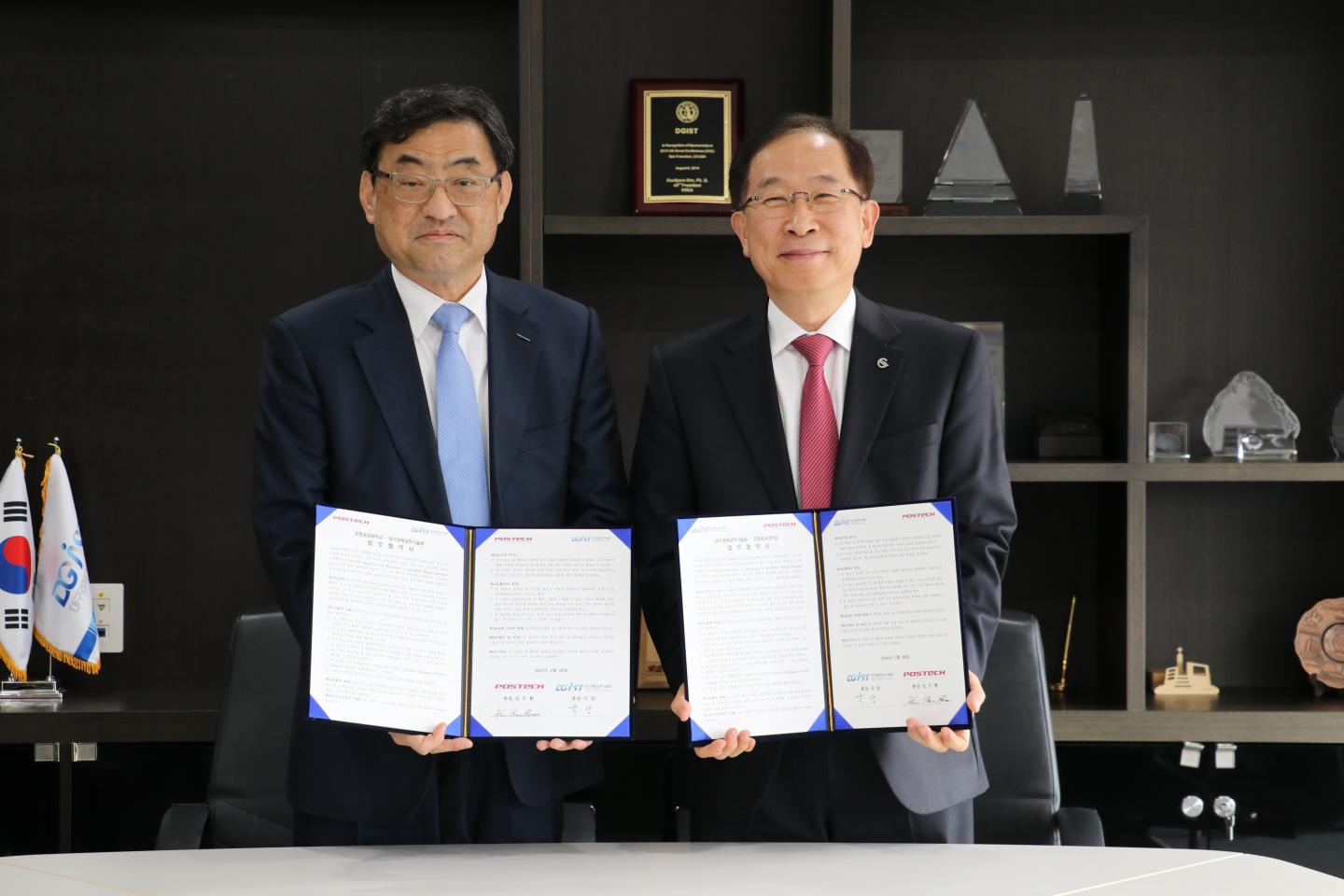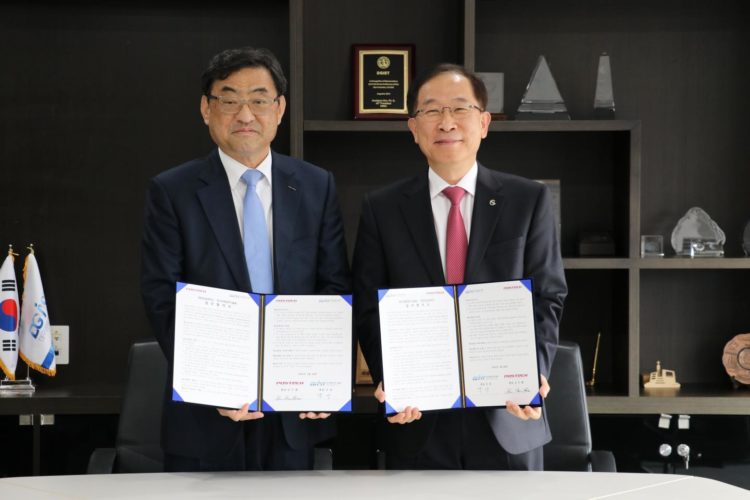Participants of ‘International SYNAPSE Project,’ DGIST and POSTECH sign an MOU to build a joint cooperation system

Credit: dgist
DGIST signed a DGIST-POSTECH MOU to carry out ‘International SYNAPSE Project’ with POSTECH. They promised close research cooperation in their participants of project as South Korean representatives and are expected to contribute positively to the research and development of human brain neural network map, an international project.
The ‘International SYNAPSE Project’ is a research project to establish a human brain neural network map by a research group consisting of 6 Asia-Pacific countries (South Korea, Japan, Taiwan, Singapore, and Australia). Its aim is to lay the framework for research innovation to understand and clarify human brain diseases, cognition, behaviors, and mentality through a 5-year-long joint research cooperation which normally takes 30 years by an individual country.
Through this MOU, DGIST will be using the super computer in the Super Computing and Big Data Center and POSTECH will be using its radiation accelerator in the Pohang Accelerator Laboratory for the project. First, they will collect the neural network images of human brain and store/analyze them on super computer. After, they will calculate the synaptic interactions in human brain and build a network system. This project will allow both DGIST and POSTECH to play a significant role in setting a milestone for brain and neuroscience development.
President Moohwan Kim of POSTECH said “As we need to act as trailblazers to take a great step forward in the world through transnational research cooperation beyond institutions, we wish POSECH and DGIST play pivotal roles to lead tremendous innovations in neuroscience and brain science, which are still unexplored by 6 Asia-Pacific countries. The high-resolution brain images acquired from 3rd and 4th generation radiation accelerators in POSTECH will especially play crucial roles to build the neural network of human brain.”
President Yang Kuk of DGIST said “We hope that the 6 Asia-Pacific countries lead the neuroscience and brain science field through the spread of research findings based on the state-of-art super computer infrastructure at DGIST. This agreement will contribute to creating a virtuous cycle of breakthrough research achievements.”
Since establishing the first Pohang Light Source Accelerator in South Korea in 1994, the Pohang Accelerator Laboratory published about 6000 SCI research papers and has led remarkable growth in the domestic radiation research field from almost nothing. Currently, the lab is running Pohang Light Source Accelerator (Pohang Light Source: PLS, the 3rd generation radiation accelerator) and PAL-XFEL (Pohang Accelerator Laboratory X-Ray Free-Electron Laser, the and 4th generation radiation accelerator).
###
Media Contact
Kwanghoon Choi
[email protected]
82-537-851-135
Original Source
https:/





